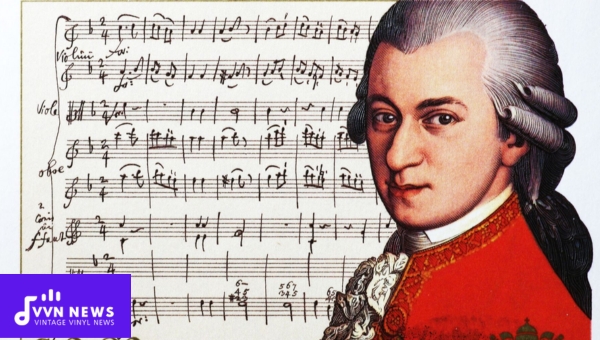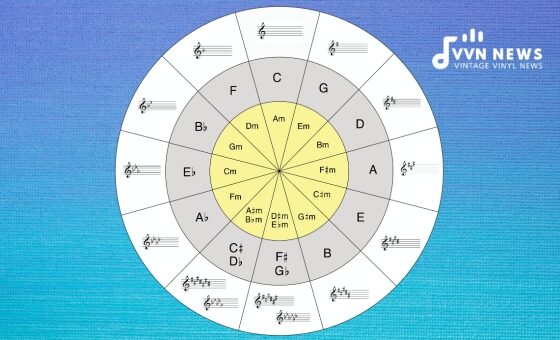As I delved into the musical abyss of music history, I stumbled upon a fascinating tale that rings true in today’s streaming-dominated industry. The story stars none other than the music prodigy himself – Mozart.
Caught in a thrilling narrative involving him, the Vatican’s sacred Miserere, and an incident of music piracy in 1770, you’re invited to join me as we navigate this captivating piece of history.
Believe me when I say that Mozart & Music Piracy in 1770: The Vatican’s Miserere is as compelling as the symphonies he conjured long ago.
Music piracy may seem modern, but as you’re about to discover, it has deep historical roots.
While today’s acts of piracy revolve around copying files and illegal downloads, the methods were rudimentary yet equally controversial back in Mozart’s day.
As timeless as classical music might be, it was not exempt from the encroachments of artful duplicators and cunning bootleggers.
Join me on this journey down memory lane as we survey an unorthodox chapter from Mozart’s illustrious life.
Setting The Stage: Music Piracy in 1770
Let’s put ourselves into the shoes of those living in the late 18th century. The idea of “intellectual property rights” had yet to flourish seriously. Laws protecting artistic works were in their infancy, and the concept of “piracy” was more concerned with marauders on the high seas than duplicitous duplicators of music.
Music Industry and Intellectual Property Rights
The term “Intellectual Property Rights” in music signifies a musician’s legal entitlement over their craft, denying others the right to reproduce or monetize it without their permission.
During Mozart’s era, these concepts were not as robustly formulated as they are today.
Back then, pirating a tune meant remembering it by ear or brazenly spiriting away written notes—it relied on remarkable feats of memory and subtle guile.
Legal measures established for protecting musicians’ creative rights were rudimentary at best, unintentionally fostering a culture where piracy became an intrinsic part of musical dissemination.
During this period, piracy was more accepted as an unfortunate reality than an actionable offense.
There wasn’t much one could do to stop someone from nodding their head in time with a melody and scribing down its notes later.
It was akin to chasing after a whispering wind that slipped through your fingers no matter how hard you tried to grasp it.
All these factors merged into an atmosphere ripe for rampant musical piracy in Mozart’s time—setting the perfect backdrop to our story involving “Miserere,” one of the Vatican’s most treasured compositions.
Music piracy hasn’t changed much throughout history; what has considerably shifted is how society perceives it, regulates it, and punishes it.
Mozart’s age allowed him to memorize an entire composition unscathed—something unimaginable in today’s stringent copyright-led world.
If nothing else, this microcosm from 1770 serves as an important reminder that every era comes with its scoring system—the chords may remain constant. Still, the rhythm marking our collective dance keeps evolving with time.
Also Read: B Flat Minor Pentatonic Scale [Create Emotive Music In Minutes]
The Vatican’s Gem – Miserere
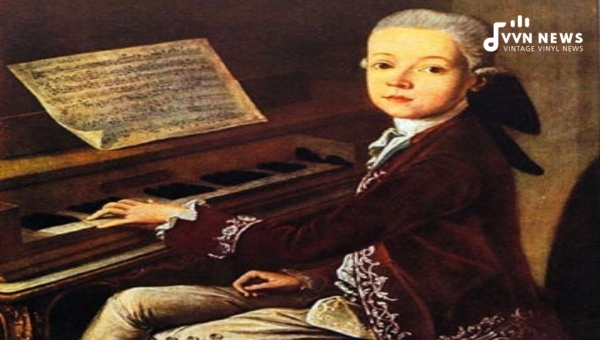
At the heart of our tale lies a musical masterpiece called “Miserere”. It was not merely a composition but a precious gem residing within the heart of the Vatican.
What is Miserere?
“Miserere” is a psalm setting created by Gregorio Allegri in the 17th century. It is often tied to Holy Week and traditionally performed during matins, also known as ‘Tenebrae.’
This has made “Miserere” inextricably linked with the commemoration of Christ’s Passion, contributing to its sacred aura.
“Miserere mei, Deus” or “Have mercy on me, O God” forms the opening verse of Psalm 51 in Latin, from which Allegri derived his composition’s name.
It’s an intricate piece that became synonymous with spiritual awakening and repentance within Christianity.
Importance to The Vatican
The composition holds immense significance for the Vatican because it is exclusively performed in the Sistine Chapel during Holy Week.
Its lyrics invoking divine mercy, and its ethereal choral arrangement earned it a reputation as a spiritual conduit between believers and their God.
As such, Miserere was deemed so sacred and unique that the Catholic Church fiercely guarded it behind its holy walls.
Legal Protections for Miserere
Regarding legal protection, it was clear that “Miserere” stood on an exclusive pedestal.
The Papal States held an iron grip over this spiritual melody to maintain its sanctity and ensure unauthorized performances did not dilute its status.
Indeed, unauthorized transmission or documentation of “Miserere” was strictly prohibited under Papal mandates, making it one of history’s earliest examples of stringent music copyright protection.
An attempt to replicate or distribute “Miserere” without consent from Papal authority would lead to excommunication—the most significant deterrent in those times.
To understand how pivotal this psalm was for the church, imagine how profound a measure of excommunication was in that era: akin to being completely ostracized from society – a fate worse than death for many devout believers.
Thus nestled within these ecclesiastical strongholds were two striking entities – “Miserere,” an unparalleled musical treasure, and Wolfgang Amadeus Mozart – an unmatched prodigy set on shaking up this status quo.
Also Read: F Music Note [Unlock The Secrets Of The Musical Alphabet]
Mozart’s Tryst with ‘Miserere’
In 1770, the 14-year-old Mozart traveled to Rome during Easter for a grand tour through Italy with his father.
As part of the vibrant celebrations, they visited the Sistine Chapel to hear two performances of ‘Miserere’ by Gregorio Allegri – a hauntingly beautiful piece of sacred music written exclusively for the Sistine Chapel.
The Spark – First Introduction to ‘Miserere’
‘Miserere’ is renowned for its ethereal high notes and heartfelt lyrics derived from Psalm 51.
This heartbreaking composition was perceived as a sacred hymn embodying religious charisma.
It was traditionally reserved solely for Tenebrae services instated during Holy Week at The Pope’s behest for many decades.
Each performance of ‘Miserere’ was shrouded in absolute mystery and reverence.
To maintain its profound sanctity, it was forbidden by Papal degree to transcribe or reproduce the piece outside the Vatican.
Profound implications were forewarned, including excommunication from the Church itself – An instruction to ensure this sacred symphony remained forever within the confines of the Chapel’s ornate walls.
The Prodigy’s Power – Aural Acuity
Wolfgang Amadeus Mozart, however, had been gifted with a remarkable talent that would come into play here; he possessed an extraordinary musical memory that could retain melodies and compositions upon a single hearing.
A unique ability that allowed him to mentally register musical compositions with almost frightening accuracy and detail after merely listening to them once or twice.
Returning to that fateful day, young Mozart sat through two renditions of ‘Miserere’. Upon returning to their lodgings, he astoundingly recreated the entire composition only from memory!
His father, Leopold, wrote about it in his travel diary, indicating, “you would have sworn that Wolfgang had written [the Miserere] out as he looked at it while being sung”.
This fantastic act hovered on edge – Was this unwarranted breach or proof of peerless virtuosity? Legally speaking, at least, due to the absence of concrete laws governing this spectrum in Mozart’s time—no one knew for sure.
Hence began young Mozart’s tryst with ‘Miserere,’ scribing one of music history’s controversial chapters through his incredible showmanship and prodigious memory.
Unveiling Amadeus: The Tale of Sacred Song Theft
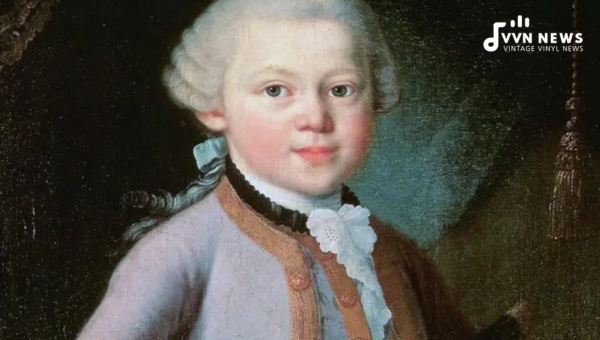
You see, our tale isn’t about just any Mozart melody. Instead, it revolves around Miserere, a sacred song at the heart of the Vatican’s musical catalog.
The institution fiercely protected this extraordinary piece—as a revered expression of devotion, it was performed twice yearly during Holy Week.
It was so sanctity that reproducing ‘Miserere’ outside the walls of the Vatican was strictly prohibited under the threat of excommunication.
Also Read: Mixolydian Mode [Add Depth & Richness To Your Music Today]
How Did Mozart Recreate ‘Miserere’?
The incident occurred in 1770 during Mozart’s teenage years. As part of a grand tour with his father, young Wolfgang Amadeus Mozart found himself in Rome for Easter week.
Naturally vain to miss such an event, he attended one of these much-anticipated performances at the Sistine Chapel.
Entranced by Miserere’s ethereal beauty as sung by two choirs—one consuming silence while the other volleyed hymns full of poignant yearning—he did what few could even dream.
With only two hearings (the second one to correct minor errors), Mozart managed to memorize and meticulously recreate this complex 12-minute piece—a feat both astoundingly gifted and staggeringly bold.
A night’s work and he had etched on paper what existed only as guarded whispers echoing down Vatican’s hallowed halls—a perfectly hand-copied version of Miserere — now poised for public dissemination.
Instead of applause or admiration from those who should have known better, a wave of strict censure ensued.
Vatican’s Verdict: Music Piracy?
To truly grasp this situation’s gravity in its historical context, it is essential to consider the Vatican’s stringent laws.
Miserere’s music sheets were fiercely guarded—allegedly, its possession or copy outside the Vatican meant immediate excommunication—the highest ecclesiastical penalty.
Then arose our prodigy—committed no crime but scribbling notes off his memory onto paper—and soon enough, echoes grew louder for charges resembling today’s music piracy.
It didn’t matter that his tool had been his phenomenal intellect rather than covert sneakiness—the transgression went beyond mere copyright infringement, crossing over into the realm where sacred bled into profane.
Hence came forth allegations mounting against young Mozart—for sacrilege or theft—the lines were blurred but unmistakably etched in angst over this unanticipated violation.
Unsurprisingly, as with many present-day instances, context mattered less than the action itself, resulting in a verdict somewhat predestined – “Song Theft,” indeed not as cruel as it sounds now, but enough to drag young Mozart into an unwarranted uproar.
Alas, though intricacies surrounding events unfolded in these characteristic brushstrokes, one thing remained certain—that while genius undoubtedly walked among us—it bore its unique repercussions, too!
Also Read: G Major Scales And Chords [Expand Your Musical Understandings]
The Overwhelming Fame of Mozart: Unforeseen Repercussions
Donned as one of history’s most significant musical prodigies, Mozart’s reputation was awe-inspiring.
Yet, the question that looms is this—how did the Miserere incident shape this virtuoso’s fame? Today, we delve deep to discern his journey following the infamous act.
A Grandeur Untarnished
Ironically, despite what might be deemed a defiant act towards the Vatican’s authority, Mozart’s illegal act of piracy didn’t tarnish his stature. On the contrary, it enhanced it remarkably. In part because of his audacity and in part due to his sheer musical genius showcased through the replication.
Retelling an Enchanting Tale
The story quickly became an urban legend. The musical sensation of Europe had done something forbidden.
He had brazenly defied both sacred and temporal authority, and he used nothing more than his prodigious memory to do so!
The retelling of this tale only amplified its allure and, consequently, that of its audacious young protagonist.
Free Publicity & Word-Of-Mouth Marketing
The recounting of this incident was a form of organic marketing for Mozart. More people began to recognize him not just as a musical prodigy but also as an audacious risk-taker.
Was it not tantalizing enough for them to want to experience showings by such a bold talent? As can be imagined, the Miserere incident only elevated Mozart’s popularity among music lovers.
A Strain on Relationships
Notwithstanding Mozart’s escalating fame, this act caused a minor strain between him and some high-ranking ecclesiastics.
After all, composing wasn’t merely an art during his era—it carried deeply intertwined religious undertones.
Nevertheless, none could remain oblivious to Mozart’s exceptional talent for much longer—his dazzling array of compositions drowned out any whispers of controversy that might have threatened to haunt him.
Thus, it unfurls another unforgettable segment from Mozart’s larger-than-life biography—leaving us pondering where we draw lines demarcating inspiration from appropriation—and asking if such borders are ever so clearly marked.
The Ripple Effect: Post-Mozart’s ‘Miserere’ Era
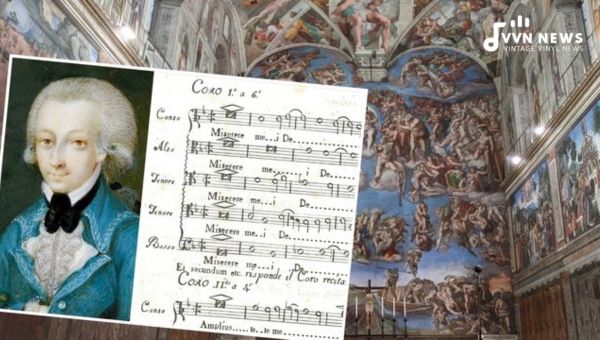
The echoes of Mozart’s audacious act reverberated long after he had vacated the hallowed halls of the Vatican.
His musical transgression left an indelible mark, not only on his career but also on the patina of future musicians, their performances, and the very essence of Miserere itself.
Impact on Future Musicians and Performances
Mozart’s feat was a daunting precedent for aspiring musicians.
On the one hand, it set a high bar for sheer memory prowess and inner auditory ability – traits integral to Mozart’s divine artistry.
Apprentices striving to make a name in the trills and arpeggios of classical symphonies had to recognize Mozart’s accomplishment as the gold standard. They too must command such acute musical intuition if they wished to be regarded highly.
After that, several famed musicians showcased similar feats. After hearing it in Rome, British composer Samuel Wesley repeated Mozart’s feat in 1800 by memorizing Allegri’s Miserere.
Wesley remembered the composition and even added his spin on it when performing later – much like how artists do cover versions today.
Also Read: 32 Best Guitar Synth Pedals [Upgrade Your Guitar Effects]
Consequences for Miserere
The Vatican struggled with maintaining its proprietary rights over Miserere post-Mozart’s carry-on.
The sacred composition spiraled out from its ceremonial confines toward wider appreciation.
Promotion
The incident unwittingly served as an intense promotion for Miserere. Previously sequestered within chapels’ choirs and accessible by only those privileged enough to witness divine liturgies, Miserere started gracing more public venues post-Mozart’s exposé.
Distribution
Inadvertently fueling this was Italy’s publishing triumvirate – Ricordi & Company (founded in 1808)—who made Miserere‘s notes readily available outside the Vatican walls six years post-Wesley’s feat.
This distributional push transformed Miserere from a guarded secret into an accessible template for the masses, which anyone could freely perform now!
Sanctity
It might be tempting to argue that this rampant exposure diluted Miserere‘s sanctity—its aura tethered irreversibly with each new performance echoing beyond St Peter Cathedral.
But often, sanctity is more about personal introspection than exclusivity. As Miserere traversed geographical and cultural chasms—letting more musically inclined souls relish its mesmerizing repertoire—wasn’t that akin to its sanctification?
Pondering these paradoxes stitched in Mozart’s legacy–how he masterfully pirated while paving the way for enhanced appreciation–one can’t help but marvel at history’s penchant for poetic justice!
Revisiting Historical Context: From Piracy To Preservation
Decades of change mold us into accepting present complexities without considering their origins.
Music’s trajectory was sculpted by historical moments, such as Mozart pirating the Vatican’s “Miserere.”
Assimilating these historical pieces, we recognize how access, copyright laws, and cultural preservation have shaped our musical world.
Access
Irrefutable musical talent was not the only gift Mozart had. His privileged access to significant performances played a colossal role in his career.
Today, technology has democratized access, making almost every piece of music accessible with a single click.
Accessibility doesn’t equate to legality—an essential distinction owing its roots to historical understanding.
Copyright Laws
Circa 1770, copyright laws were essentially non-existent—unlike today’s meticulous legal framework safeguarding artists’ rights.
This lawless environment fostered unchecked indirect pirating acts by brilliant minds like Mozart, giving birth eventually to a framework striving to balance between preserving creative freedom and protecting intellectual property.
Cultural Preservation
Interestingly, Mozart’s act of music piracy contributed to cultural preservation.
His transcription of ‘Miserere’ has preserved this sacred song for further generations—an unintended positive effect of music piracy.
Reflecting on these complexities helps us understand where we stand today—a point in history where severe penalties serve as deterrents against unauthorized distribution while access becomes globally democratized.
Through this historical lens, we are better equipped to appreciate current rights and restrictions around music, understanding that they aren’t arbitrary but rather carefully curated consequences of our past actions and inactions.
Appreciating the harmonious dance steps of history can guide us in forging insightful paths into our shared musical future.
Also Read: 20 Best Phaser Pedals [Top Picks For Epic Sound Effects]
FAQs About Mozart & Music Piracy
What year did Mozart copy the Miserere?
Mozart copied Gregorio Allegri’s Miserere after attending a performance in the Sistine Chapel in 1770.
Was Mozart legally penalized for his act of ‘music piracy’?
No, Mozart faced no legal repercussions for this, as there were no stringent musical copyright laws in effect during the 18th century.
How did Mozart remember the Miserere without taking any notes?
With his prodigious musical abilities, Mozart memorized Miserere after hearing it just twice, allowing him to document it accurately later.
How old was Mozart when he committed this act of music piracy?
At a mere fourteen years of age, while on a trip to Rome with his father Leopold, Mozart engaged in what we now see as an act of music piracy.
Why was Miserere considered so special by the Vatican?
The Miserere was considered sacrosanct and highly exclusive to Vatican due to its divine melodies and choral complexities that elevated it as one of the finest spiritual expressions in music during that era.
Conclusion
As we close this harmonious journey through the annals of music history, we understand that music piracy isn’t a contemporary phenomenon introduced along with the digital age—it has centuries-old roots in Mozart’s era.
Above all, we learn that music is more than just an art form—a cultural artifact representing our collective ethos.
Music piracy, seen in Mozart’s tale, reminds us of the delicate balance between cultural preservation, intellectual property rights, and accessibility.
It takes us one note closer to appreciating the symphony we call history—beautifully entwined with imperfections and refining chords over time.
